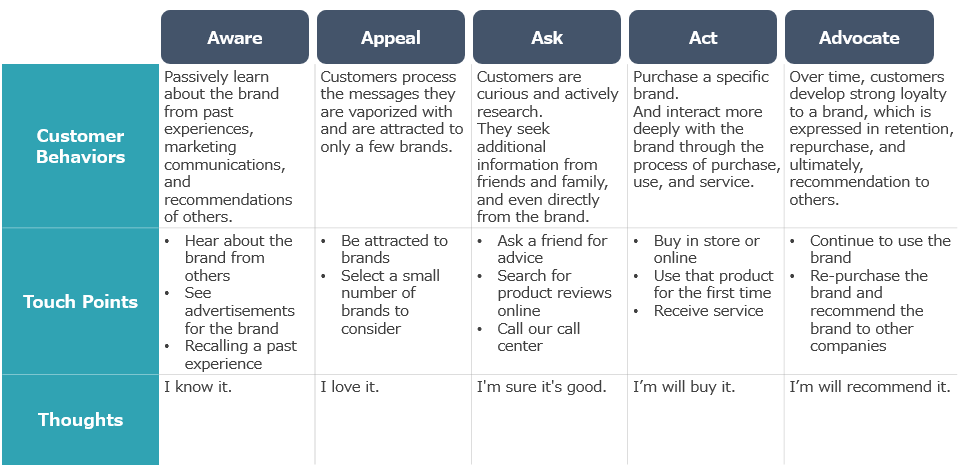Co-creation is a concept raised by C.K. Prahalad and others in their book and represents a new way of approaching innovation in which companies, customers, suppliers, and channel partners collaborate to create new products and value. Let’s take a closer look at what this means in detail.
Contents
Background of the need for co-creation marketing

As mentioned in the previous article, today’s customers trust word of mouth and reviews on the web more than advertisements sent out by companies. These are vastly more voluminous than the information sent out by companies, and moreover, they are shared on social media such as Twitter and Facebook with a large number of people, and products and brands are spoken about freely and shared with an unspecified number of people.
In this customer landscape, companies have begun to focus on social network marketing to reach out to a wide range of customers through social media. However, because social networking is universal, the connection to the brand is loose, and while SNS marketing is good at loosely connecting with diverse customers, it is not good at establishing a strong connection with the brand.
Co-creation marketing was focused on solving this problem, by inviting loyal customers and brand evangelists into the co-creation community, hoping that deeper communication with customers would lead to more support and recommendations for the brand.

Co-creation would fall under the part of the 5A customer journey map in Marketing 4.0 that forms recommendations (ADVOCATE).
Mass advertising and PR are responsible for ①AWARE and ②APPEAL. For ③ASK, brand websites, word-of-mouth/review articles, and retargeting ads. Campaign sites, in-store promotions, etc. are effective for ④ACT, while co-creation helps to form ⑤ADOCATE.
Study of the 5A customer journey map in Marketing 4.0
Another reason for the increased focus on co-creation is the shift in recent years from short-term sales to mid- to long-term customer LTV (customer lifetime value). In Japan, where the population is shrinking and product life cycles are becoming shorter, focusing on short-term sales is inefficient.
Examples of Co-Creation Communities in Japan
So what kind of activities are unfolding in the co-creation community? Let us take a look at some examples. Each company operates a variety of communities, where they conduct giveaway campaigns and surveys, and develop content for members. These communities are used to create daily contact with customers, improve brand loyalty, and develop products that proactively incorporate customer feed

MUJI Living Research Institute
https://www.muji.net/lab/
A research institute for better manufacturing, disseminating user surveys, columns, etc. They also solicit opinions on product improvements and products that people want and make and improve those products, as well as publish reports on those adjustments.
Zexy bride cafe
https://cafe.zexy.net/CSP/login.jsp
It functions as a place where users can pick up their diaries up to their marriage in articles and exchange information with other users. It also functions as a place to exchange information necessary for marriage preparation by developing a place to discuss problems and give away original goods.
AJINOMOTO PARK
https://park.ajinomoto.co.jp/
With the catchphrase “Find deliciousness every day,” the site supports the creation of delicious dining tables with recipes that make use of familiar seasonings. The site offers a recipe encyclopedia, health, and food information by theme, a mail magazine, and campaigns.
Co-creation can be created through apps and physical events.
Recently, “StyleHint,” an app for discovering how to dress well, provided by Fast Retailing, which operates the UNIQLO chain, has been attracting attention. This app allows customers to post and share their product styling tips and is an example of a company effectively using the app to learn how customers wear its products.
Other examples include the “Snow Peak Way” event held by camping equipment manufacturer Snow Peak and the “Cho-En(超宴)” held by Yo-Yo Yo-Yo Ale’s Yakho Brewing Co.. They provide opportunities for customers and operating company staff to communicate and discuss products without limiting them to online communities.
Marketing activities based on customer opinions will continue to expand in Japan, both online and offline, in a variety of locations and devices. The value of consumers’ experiences with products and services is difficult to value in isolation, but the accumulation of individual customers’ experiences has the power to create more value. By making good use of co-creation, which connects customers with each other, you can draw out the strengths of your products and improve them.
How about creating a mechanism to obtain recommendations for your brand through initiatives using your customer community?

